Having arrived with Patricia and her friends Marta and Silvia in the centre of Managua, we unavoidably had to come to the central square called the Republic or Revolution Square (Plaza de la República/de la Revolución).
On one side of the square there is the Central Park (Parque Central), while on the remaining sides there are some of the more important edifices.
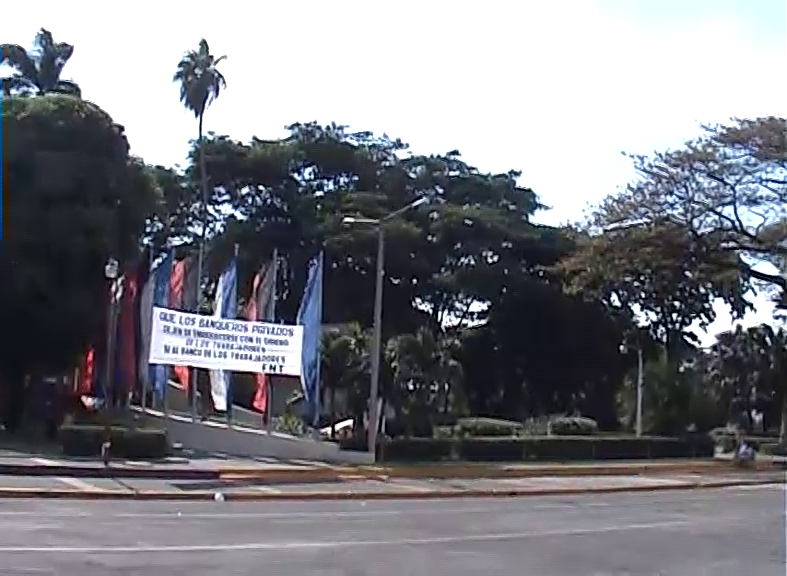 Central Park in Managua
Central Park in Managua
On one side there is the House of the Peoples (Casa de los Pueblos), often called the Orange House and the reason for this is quite obvious once this building is seen.
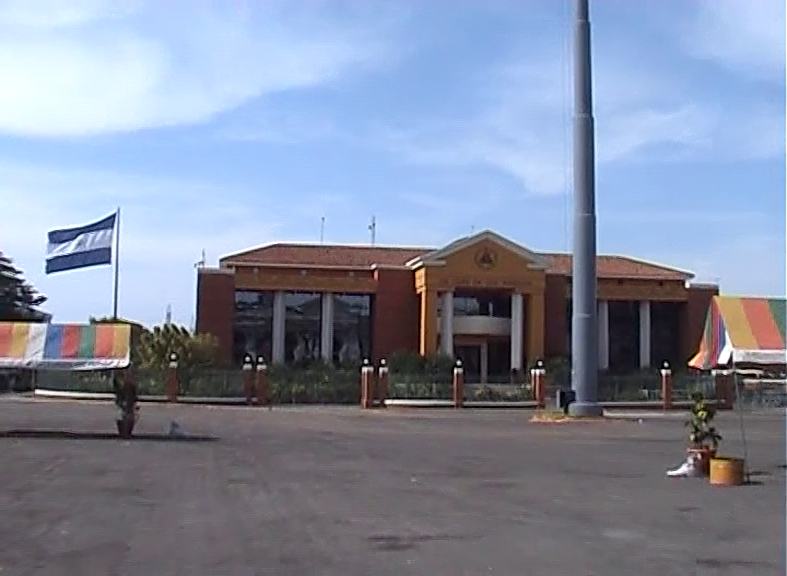 House of the Peoples
House of the Peoples
From 1999 until 2007, this building served as the Presidential Palace, but it lost this function after Daniel Ortega won the presidential elections in 2006, so soon after he came into power this Presidential House became the House of the Peoples and it serves as the seat of the government and is used for important ceremonies or state visits.
The next one in line, as one revolves in this spacious square, and practically opposite the Central Park, is St. James the Apostle Cathedral (Catedral de Santiago Apóstol).
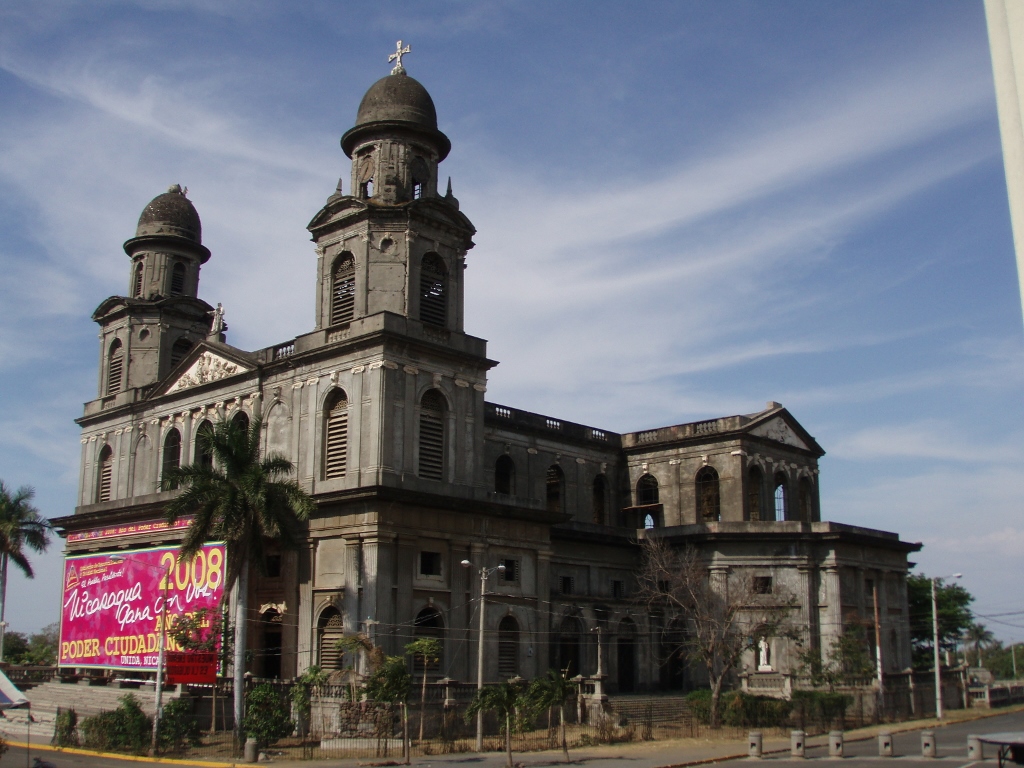 Cathedral in Managua
Cathedral in Managua
If one looks at the photo above a little closer, it is possible to see that the cathedral is in an abysmal state. The construction of the church, nowadays called the Old Cathedral, started in 1928 and it took around ten years. This was the first cathedral in the Western Hemisphere that was built entirely of concrete on a metal frame. Since by 1931 only that metal frame had been constructed, the cathedral managed to survive a powerful earthquake that hit Managua that year and so the construction was completely finished in 1938. But, then came 1972 and a new, very powerful earthquake which durably damaged the cathedral and it is no longer used. The authorities have decided to build a new cathedral in some other place, but have left this one as it is. By the year 2008 it was not possible to make any kind of repair on it, but I don’t know if engineers have come up with some solution since then. This way, particularly being made of concrete that has turned darker over time, the cathedral appears gloomy, but this is normal after all since it cannot be maintained.
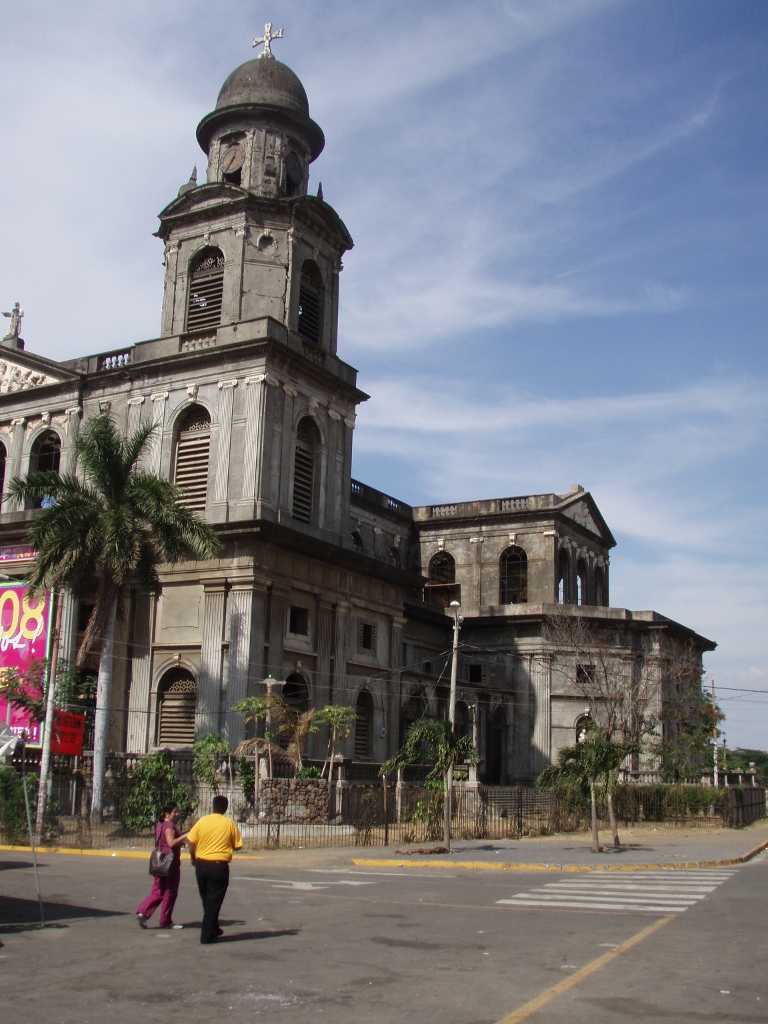 Cathedral in Managua
Cathedral in Managua
On the fourth side of the square there is the National Palace (Palacio Nacional) nowadays called the Palace of Culture (Palacio de la Cultura). Until 1979 it used to be the seat of the National Congress and some other institutions, but then there were different solutions for the building depending on who was in the power and, in 1999, the building was officially declared as the Palace of Culture, housing the National Museum, Archives, etc.
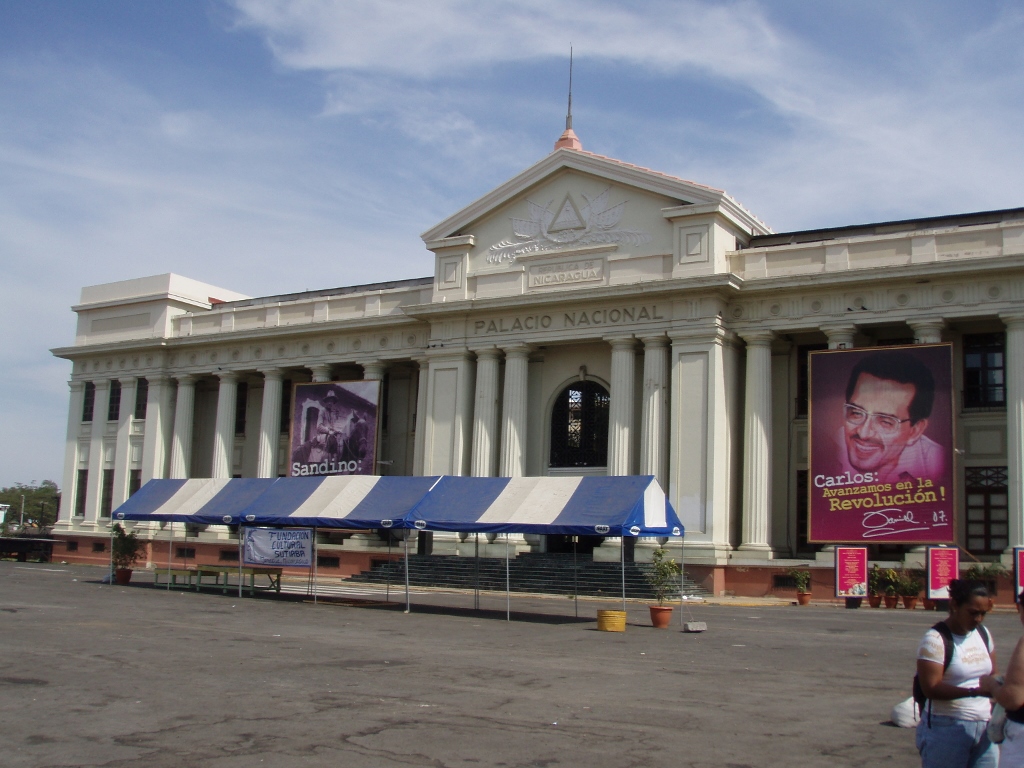 Palace of Culture in Managua
Palace of Culture in Managua
If you look closer at the front facade of the Palace of Culture, you will see that there are posters of two individuals there.
On the right-hand side is Carlos Fonseca, Nicaraguan professor, politician and revolutionary who is one of the founders of the leftist political party the Sandinista National Liberation Front (FSLN) founded in 1961. Although they were very politically active before, during the 1970’s the members of the party started with intensive guerrilla activities and in 1979, within the scope of the Nicaraguan revolution, the dictatorial Somoza dynasty was toppled from power, while Carlos Fonseca himself was killed three years earlier, in 1976. After the revolution, in 1979, the president of Nicaragua became Daniel Ortega.
By the way, the Somoza dynasty ruled Nicaragua directly or indirectly from 1936 until 1979 and during this period they ripped off the entire country (during their rule they became owners of 23% of the land in Nicaragua, while their wealth was worth as much as a half of the national debt of the country). After the revolution, i.e., the civil war, the members of the Somoza family fled to the USA.
In order for the political scene in Nicaragua to be even more complicated, already in 1979 the scene was entered by the Contras, the right-wing rebel groups that in their fight against the government of Nicaragua used terrorist attacks, very often on civilians, as one of the main form of their actions and with strong support of the USA they were active until the early 1990’s. Just when in 1990 the president of Nicaragua became a woman, Violeta Chamorro. After several presidents from different parties, in 2007, this function went back again to Daniel Ortega and he is the president of Nicaragua even today (as of March 2021).
The other person whose augmented photograph may be seen on the front facade of the Palace of Culture in Managua is “the one from whom it all sort of started.” This is Augusto Sandino, Nicaraguan revolutionary and leader of the rebellion against the occupation of Nicaragua by the USA (as a part of the so-called Banana wars).
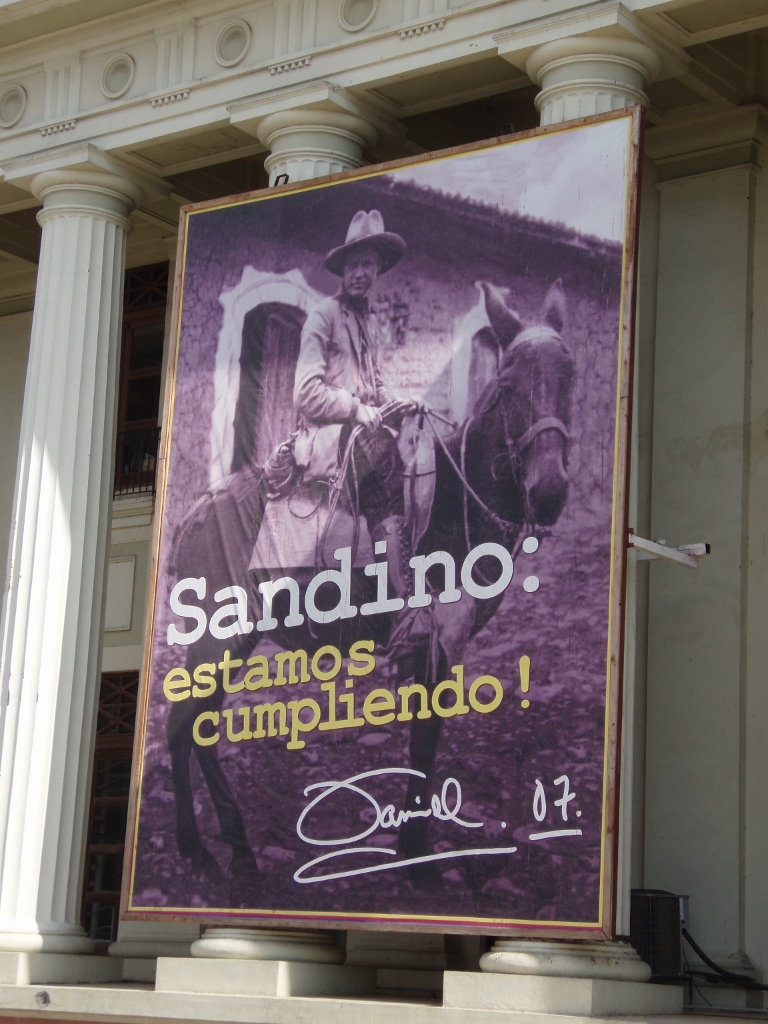 Augmented photograph of Augusto Sandino
Augmented photograph of Augusto Sandino
The USA formally occupied Nicaragua in 1912 and the main reason was to prevent that anybody else apart from the USA built the Nicaragua Canal. Namely, because of the large lake that exists in Nicaragua, ever since the 19th century there was this idea to make a canal precisely through Nicaragua in order to connect the Atlantic and the Pacific Oceans. The idea was given up later and in the meantime the Panama Canal was built. (By the way, there are still plans to build the Nicaragua Canal.)
Fighting against the American influence, in 1927, the guerrilla army led by Sandino attacked an American marine unit for the first time and this is where the armed rebellion actually started. It’s a great question what would have happened had it not been for the Great Depression and then in 1933 the last American soldiers left Nicaragua. But, it continued to be unstable in the country. At the beginning of 1934, Sandino was invited to some peace talks in Managua, while this was a good opportunity to kill him and his closest associates. This murder was executed at the orders of the commander of the National Guard and that was precisely the Somoza who established dictatorial rule of his family through a coup d’état in 1936 becoming the president of Nicaragua on 1 January 1937.
Although nobody knows where Sandino was buried, while there are different stories about what actually was done with his body, he has become one of the most important popular heroes of Nicaragua and one of the ultimate symbols of revolutionary fight and an idol of left-wing revolutionaries, especially in Latin America. Thus, it was after him that the political party the Sandinista National Liberation Front got its name, while his followers are called the Sandinistas.
When writing about my travels I usually don’t write much about politics, but the events in Nicaragua during the 20th century seem to be particularly interesting. I guess I also feel the need to clarify some of the terms I heard as a child – the Sandinistas and the Contras, and then this creates a whole chaos.
Further sightseeing of the centre of Managua also included a visit to the Palace of Culture. The upper floor was off limits, but the lower one was for the visitors.
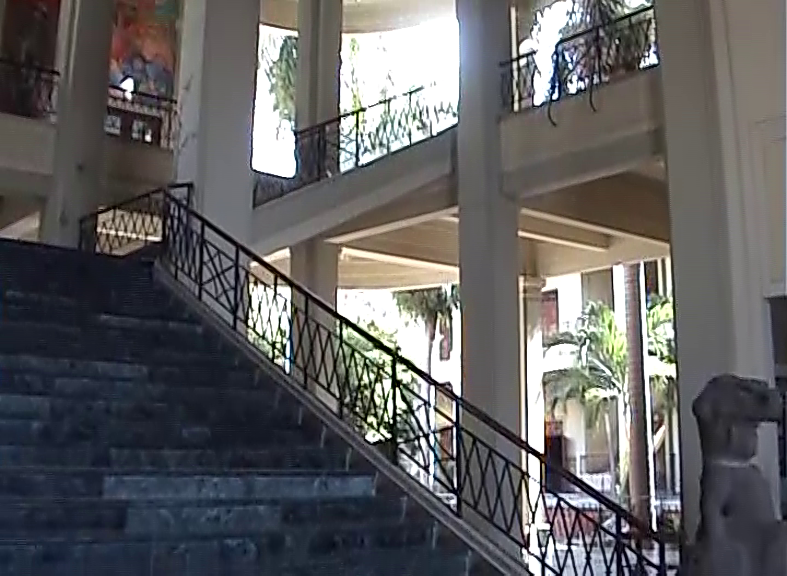 Interior of the Palace of Culture in Managua
Interior of the Palace of Culture in Managua
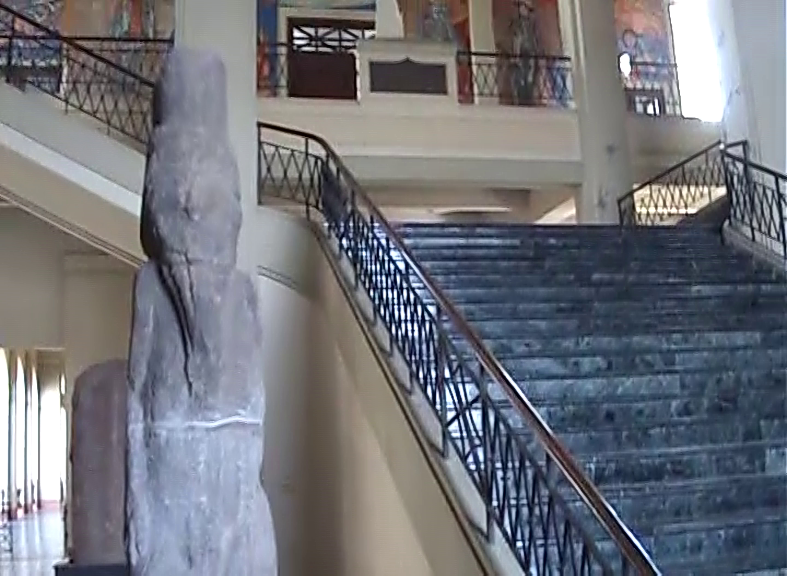 Central stairway in the Palace of Culture
Central stairway in the Palace of Culture
It felt very pleasant inside, while the space is additionally decorated with palm trees and other plants growing in the courtyards of the palace.
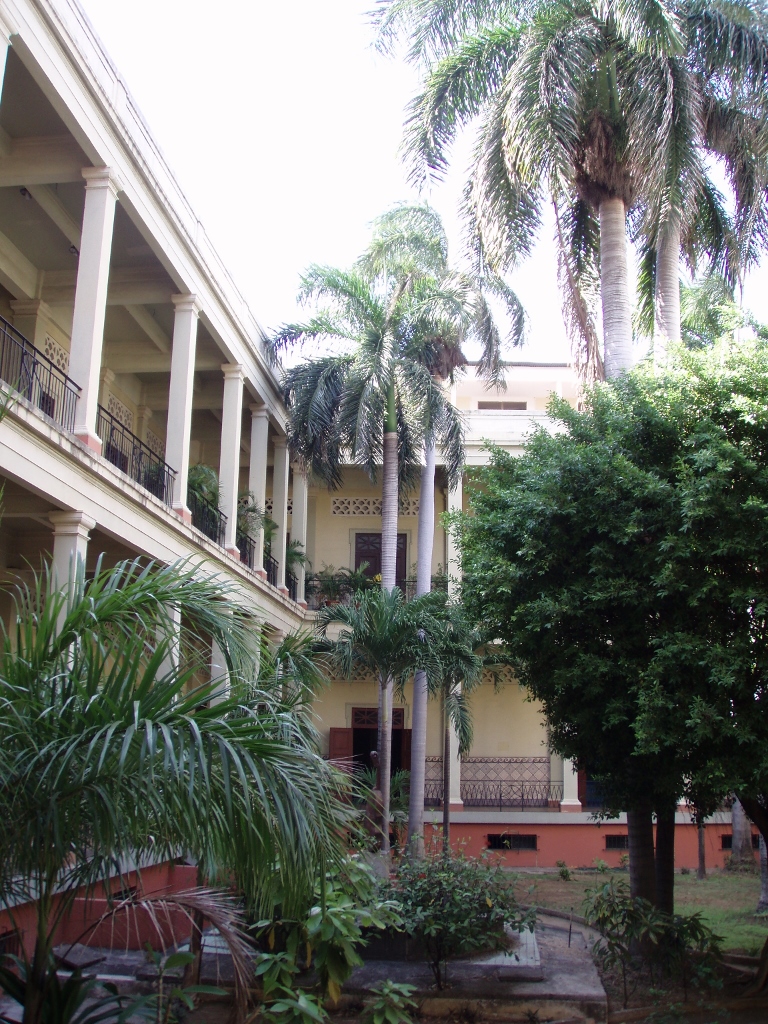 One of the courtyards in the Palace of Culture
One of the courtyards in the Palace of Culture
Since the palace is partially used as a museum as well, we also walked around looking at different displays.
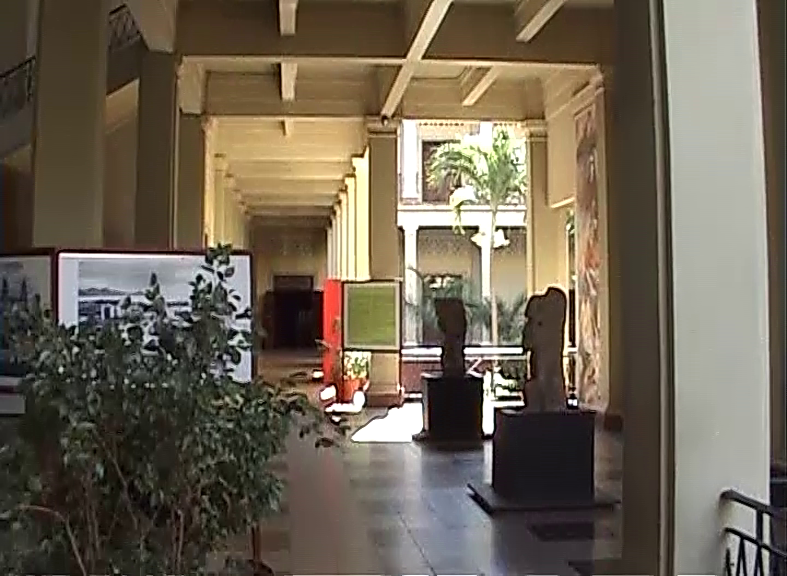 Exhibition area within the Palace of Culture
Exhibition area within the Palace of Culture
After the visit to the Palace of Culture, we walked in the scorching sun to the shore of the nearby Lake Managua, also called Lake Xolotlán. From there, we could nicely see peninsula Chiltepe that practically hides from view Momotombo volcano that we had seen back in León Viejo.
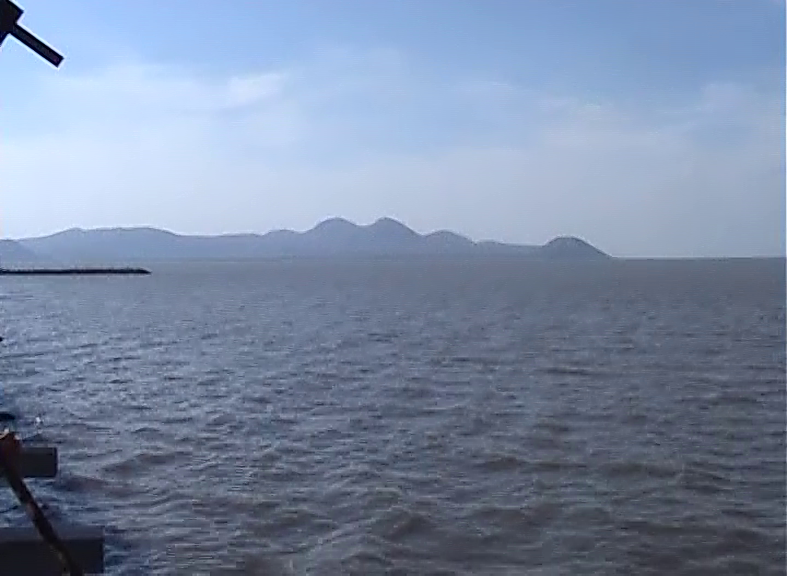 Lake Managua and Chiltepe peninsula
Lake Managua and Chiltepe peninsula
We mostly came here because I had this idea of perhaps going on a short boat ride on Lake Managua and when we got to the shore there was indeed a place where people could get tickets, but... The lake was disgusting – its muddy colour aside, it had a terrible stench. Afterwards I found out that the lake is considered to be the most polluted lake in Central America. The reason for this is that for decades (since 1927), the sewerage system has been discharging into the lake. Yuk! According to what I have recently read, they built some kind of a waste water treatment plant in Managua in 2009, but this covers only 40% of such waters in the city. Until more plants of this kind have been made, the remaining 60% of the sewerage waste will continue to be dumped into the lake. Yuk, yuk and yuk!!!
Trying to choose my words carefully, lest I insulted my hosts, I said that I would not actually like to go on a boat ride on the lake after all and proposed that we went for coffee instead. As it turned out, my Nicaraguan friends thought that there were no good coffees nearby, so we got into a taxi again in order to go to a shopping mall. What was really good there was that there was air conditioning. As the day was already getting close to its end, I said that I should buy some bottled water for me before going back to my guest-house and then for some reasons unknown to me, they stopped a taxi once again in order to go seemingly across the city to a supermarket where I eventually bought the water. What I want to say is that I did not understand why driving so much around when there must have been some shops with water closer to the shopping mall or my guest-house. Afterwards, certainly by taxi, we went to my guest-house where we parted with an agreement to meet again the following afternoon.
Although the day was quite interesting and I did succeed in seeing what I wanted in Nicaragua, I was rather nervous that evening. It was precisely all those taxi rides, which I had to pay for, that were making me nervous. Namely, driving in taxis all over Managua that day cost me almost 30 dollars, which was absolutely too much for my daily budget and as an illustration that was almost like both nights at that guest-house in Managua. I sincerely hoped there would be no need for that many taxi rides the following day.
That night there was a power cut for a short while and then it became horribly hot in my small room, but a little later the electricity came back and so I could sleep well with the air-conditioning on.
The next morning I woke up earlier than planned, but I did not mind it. I got ready at leisurely pace and first I went to the terminal of the transportation company to buy a ticket to Tegucigalpa, the capital of Honduras, for the morning after.
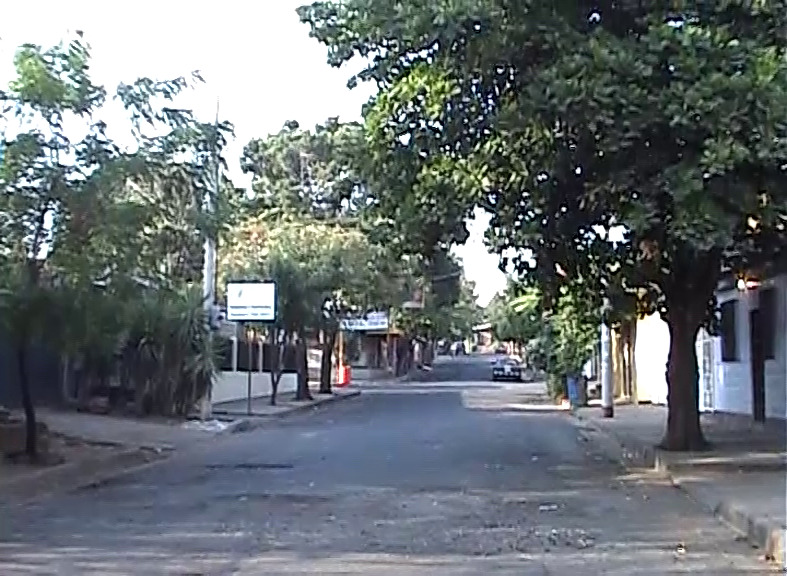 Street in Managua in which I stayed
Street in Managua in which I stayed
I got back to the guest-house in order to leave the ticket and I also saw the landlady whom I informed I planned to walk to the centre of the city. She gave me very clear and very strict instructions as to how to get to the centre.
To start with, she told me to walk in the middle of the street and not along the pavement beside the houses. It had already become quite clear to me that Managua was a dangerous city, especially for foreigners. I presume that it was not safe to walk too close to the houses since it was easy that way to grab a passer-by and drag them into the yard.
Then she said that I should walk for two blocks down the street in which the guest-house was and when I got to the large, busy street I should turn right, but under no pretext should I ever consider crossing to the other side of that street or possibly enter the blocks of houses that are situated on that opposite side of the street.
I repeated all of this in order to make sure I understood it well and then I started. By the way, against my habit, this time I did not bring any camera with me, or the small backpack, or the waist bag, but only put some money into a pocket and that was all.
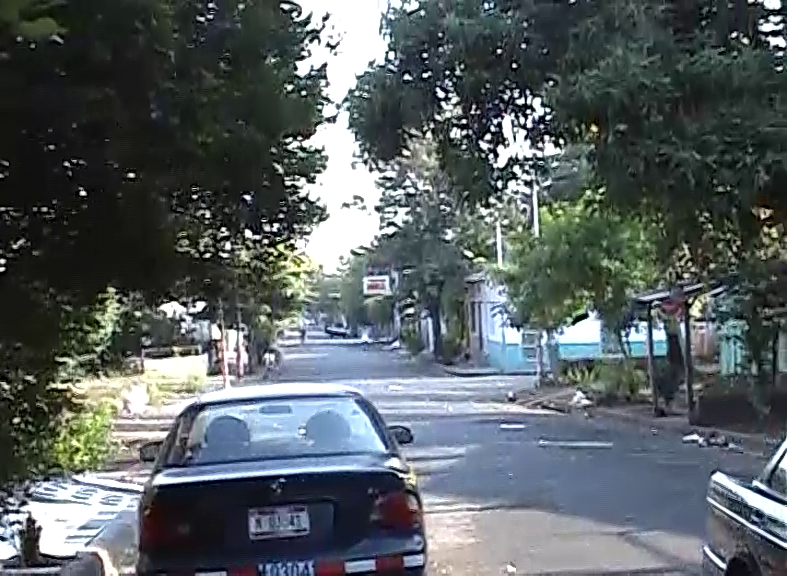 I should walk in this direction in order to get to that bigger street
I should walk in this direction in order to get to that bigger street
When I went one block farther, I saw a couple of young guys sitting on the stairway of one house built on the corner. They kindly wished me good morning, I reciprocated, and then they told me that I should not proceed straight, but rather that I should turn into that side street. I told them I still had not reached the main street where I should make the turn, but they said it was not safe for me to go straight any longer. I was confused. They were saying contrary to what my landlady had told me. I thought they were pulling my leg or wanted me in the side street hoping to take the little money I had on me. And yet, they seemed so nice and very convincing... Then I simply turned around and went back to the guest-house the same way in order to consult the landlady again. This must have seemed silly, especially if their intention was just to joke with me, but I felt safer that way. The landlady simply reiterated what she had told me before and so I did it like that. When I walked past that stairway, the guys were still sitting there, but we did not communicate any more.
I’m saying this in order to illustrate the atmosphere in Managua. Judging by the GDP, Nicaragua is the poorest country in Central America and this certainly has an impact on the high rate of crime and such lack of security. Perhaps all those taxis of the day before were necessary after all?
In any case, when I finally reached that big street, I turned where necessary and after a fine walk, going only along big, busy streets, I reached a post office that was some 2 km away from my guest-house. This was actually my goal for I wanted to send a couple of postcards from Nicaragua, as well as the postcards I had bought in El Salvador but could not post there since it was a non-working day.
Although it was around 10 am, it was already very hot. On the other hand, I was really not keen on going anywhere, plus I did not see anything new along the way, so I simply walked back to my guest-house. I checked my emails, but I did this relatively quickly and so I withdrew to my room, had a shower and then I practically started to waste time, since Patricia was to come to fetch me a little later. This was rather impractical, but there was nothing I could do. Since, in my opinion, I had spent too much money on taxis the day before, any pointless driving around the city was out of question.